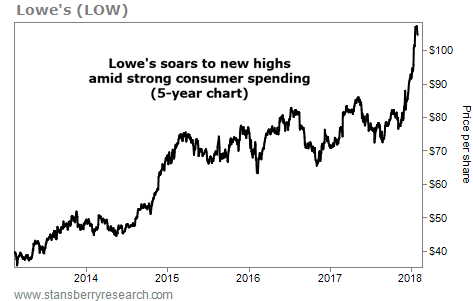Imagine you just bought a new TV. You take it home and excitedly set it up.
But a couple of days later, the thrill of the purchase is gone – and the doubting begins. "Should I have gotten the 44-inch instead of the 42-inch?" you ask yourself. "Should I have waited until 6D comes out next year?"
And then the worst question of all: "Was buying this a mistake?"
Whether it's buying a TV, a house, or an ocean cruise, spending a lot of money triggers a specific range of emotions known as "buyer's remorse." Controlling these emotions can mean the difference between making a good investment... and one that you'll both regret and lose money on...
It's the same sort of thing with buying shares. "Was my timing right?" "Did I just buy a lemon of a stock?" "Is the market about to collapse?"
And the real underlying question... "What if I lose money?"
Beating yourself up after buying something isn't going to change the fact that you made the purchase. And it may lead you to impulsively return a product (or sell a stock) that was, in fact, a well-reasoned and smart buy in the first place.
Another response to buyer's remorse is to immediately justify the purchase...
This is called "post-purchase rationalization." It makes us focus on the strengths (and overlook the faults) of what we bought.
Let's say that you buy that new TV – or stock – and then see a few weeks later that it's cheaper. Had you waited a few weeks, you could have bought the same TV – or stock – for less. Your brain will try to convince you that you needed to make the purchase at the higher price. (After all, you needed the new TV for the big game.)
With practice, we can convince ourselves that any purchase was the "right" one – no matter how flawed it really was.
It's a little like Stockholm Syndrome – the psychological condition when hostages feel sympathy for and attachment toward their kidnappers. In this case, the customer (the "hostage") is held captive by the product he buys (the "kidnapper"). And the buyer eventually convinces himself that he likes the product.
But justifying a trade that isn't working out can be just as damaging as selling off a good trade. If you refuse to accept that you've made a mistake, you can't learn a valuable lesson from the investment. And that can lead to bad buying decisions in the future.
Post-purchase rationalization might also keep you from following through on your stop loss – the price at which you plan to get out. Selling a losing stock is an
We act this way for a reason... Ownership leads to emotional attachment. We place a higher value on the things that belong to us – whether it's a house, a car, a dog, or a stock. Even selling a losing investment can be an emotional challenge.
Here are three ways to prevent buyer's remorse and post-purchase rationalization from affecting your investment decisions...
- Recognize your mistakes. In other words, know how to take a loss and make sure that you learn from the outcome. Examine exactly why a certain position lost you money, rather than convincing yourself that you were right and "the market" was wrong. (The market is never wrong: The investor who loses money believing that he knows more than the market is wrong.)
- Avoid impulse buying and selling. Researching a stock before you invest will help to reduce buyer's remorse, as you'll have concrete support for why you made the decision. You'll feel less need to rationalize the purchase. And you'll avoid selling unnecessarily based on a gut feeling that you were wrong in the first place.
- Follow your own discipline. Recognizing a bad trade in time might prevent a mildly negative position from turning into a monumental loss. If you hit your stop loss, sell.
Taking emotion out of the investment process is a critical ingredient for making money. Be objective, and don't let your feelings cloud your judgment.
Good investing,
Kim Iskyan
Further Reading:
Having conviction in your ideas can help eliminate buyer's remorse. For example, I've been writing about the "
ANOTHER ECONOMIC BELLWETHER IS TAKING OFF
Today, we check in on one of our favorite "real-world indicators"...
One of the simplest ways to measure the state of the economy is to look at consumer spending. When people are confident about the economy and their job security, they shell out more cash on things like swimming pools, riding lawnmowers, and even ski trips. And when times are good, consumers also love to spend on home-renovation projects.
For proof, we look at Lowe's (LOW), one of the largest home-improvement chains in the U.S. It's a one-stop shop for tools, hardware, building materials, and more. Recently, the company reported that its third-quarter sales swelled to $16.8 billion, up 6.5% from the year prior. When folks are getting work done and putting money into their houses, "things can't be all that bad" in America...
As you can see below, Lowe's shares recently reached a new all-time high. In fact, they rallied more than 31% over the past three months alone. Americans are busy building and remodeling. It's another sign the economy is chugging along...


